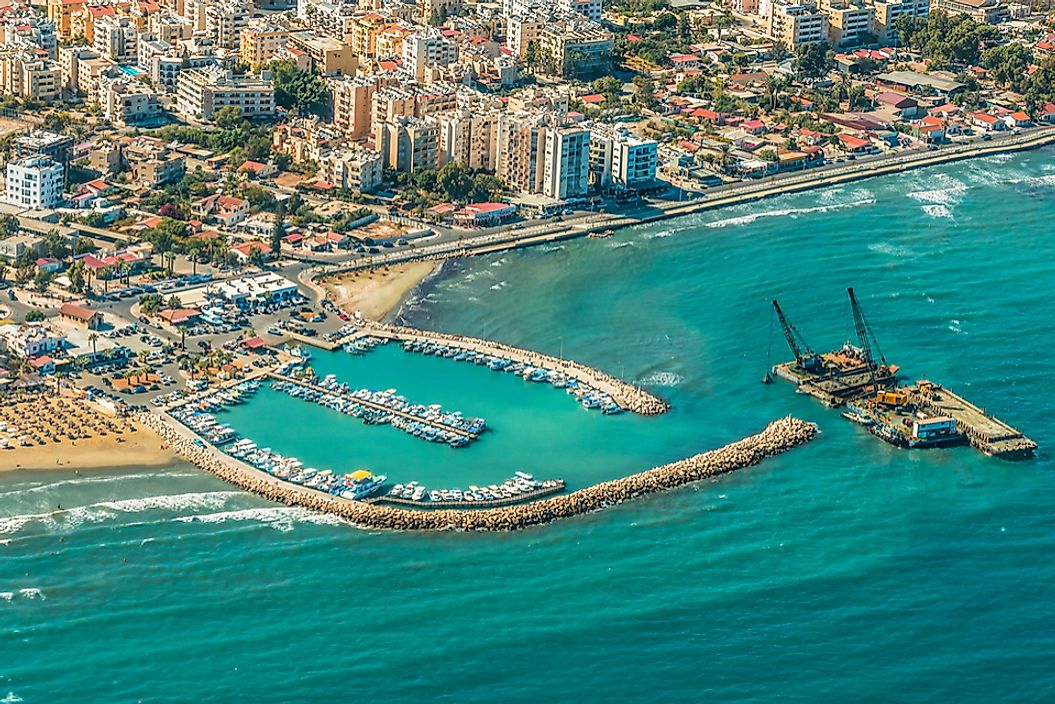Where Is Cyprus Located?

Where Is Cyprus?
Cyprus is an island nation, located in the Mediterranean Sea between 34° and 36° north latitude and between 32° and 35° east longitude. This country can be found between Turkey and Egypt, to the southeast of Greece, and west of Syria and Lebanon. Cyprus has a population size of approximately 1.17 million and covers a total area of 3,572 square miles, making it the third largest island in the Mediterranean.
Internally, Cyprus is divided into six districts and four primary groups. The largest groups are the Republic of Cyprus, which makes up nearly 60% of the island's southern region, and the Turkish Republic of Northern Cyprus, which makes up nearly 35% of the northern region. These two internal groups are separated by the Green Line, which is controlled by the United Nations to provide a peaceful zone. Additionally, Cyprus is home to two British military bases, which cover 2.74% of the country's area. This article highlights some of the geographic features of Cyprus.
Geography of Cyprus
Cyprus is long and narrow in shape, measuring 149 miles in length and 62 miles in width (at its widest point). Given its location between several continents, Cyprus is often considered part of Europe, the Middle East, and western Asia.
The geography of the island is made up of mountains and plains. Two mountain ranges, the Kyrenia and the Troodos, form the Mesaoria plain between them. The Troodos mountains are the largest of the two ranges and cover the majority of Cyprus's western region. The highest point within this mountain range is Mount Olympus, which stands at around 6,404 feet above sea level. The Kyrenia range is located on the northern side of the country, where it stretches for approximately 100 miles. Mount Kyparissovouno is the tallest peak of the Kyrenia, standing at about 3,360 feet above sea level. The Mesaoria plain begins between these two mountain ranges and reaches to the Mediterranean Sea to the west. It covers the majority of the north-central area of the country, stretching to about 60 miles in length and between 10 and 20 miles in width. All waterways within this plain run down from the mountain ranges and into the Pedieos river, which is the longest in Cyprus. Many of the streams and rivers running through the Mesaoria plain are seasonal, which means they only have water at certain times of the year.
Biodiversity of Cyprus
Cyprus is home to nearly 2,000 plant species, as well as 400 bird species, 30 mammal species, 22 reptiles, and 3 amphibians. In the surrounding Mediterranean Sea, researchers have also identified approximately 650 types of seashells, or mollusks. Additionally, both the inland and coastal waters are home to approximately 250 fish species. A large percentage of these species are endemic to Cyprus, which means they are not found anywhere else in the world. Of all of the biodiversity found in Cyprus, at least 23 species are categorized on the International Union for Conservation of Nature (IUCN) Red List as vulnerable, 14 are considered endangered, and an additional 11 species are categorized as critical. As part of the European Union, Cyprus has declared the environmental goal of stopping biodiversity loss by the year 2020.











